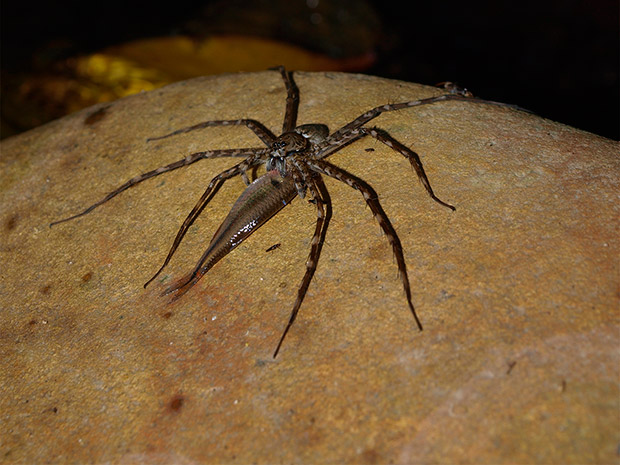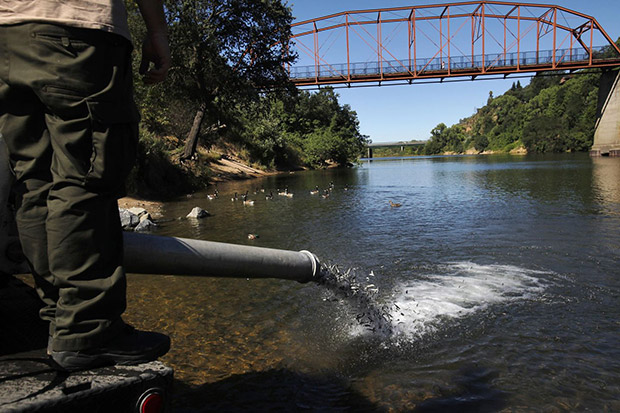
If you want to watch a spider eat a fish—and you know you do—you need to think like a spider.
First, go where the water is still: a windless lake, or a bend in a lazy stream. This is where fish wait for insects to fly close to the surface. It’s a place where the fish feels comfortable. The spider is comfortable, too: Its hind legs anchored on a stone or branch while the front legs rest on the water’s surface. But the spider is ready (and hopefully so are you, with your camera), and the moment the fish’s dorsal fin breaks the surface and makes a ripple, the spider will pounce.
This drama plays out every day, on every continent except Antarctica, according to a paper published today in PLoS ONE by zoologist Martin Nyffeler the University of Basel in Switzerland, who has made his career studying spider behavior.
Apparently, he also has a passion for giving the world more nightmares, because recently his academic output has focused on spiders that eat bats, earthworms, snails, and now, fish. ”A couple of years ago, I started to review the entire spider ecology literature,” he said. “Everything.”
He compiled research from mainstream journals as well as those too old, obscure, or foreign to make it into the arachnophilic canon. After a while, he noticed that non-insect eating behaviors seemed to be more common, and more widely spread, than most spider biologists previously believed. “They all laughed at me and said ‘Spiders don’t eat slugs and snails’,” said Nyffeler. Then he published his review, and the laughter stopped.
In addition to his massive literature review, Nyffeler combed the internet and spoke to fish and spider biologists to gather evidence of fish predation. He contacted the author of each internet picture to make sure the photo wasn’t staged (otherwise he excluded it from his analysis). He also took note which species only caught fish in experiments staged by researchers in the lab or in the field. He didn’t immediately discount these, but was careful to annotate them as such. He also worked with fish specialists, and recruited fish expert Bradley Pusey from Australia’s Centre for Excellence in Natural Resource Management as his co-author.
By the end, he confirmed 89 incidences of spiders hunting fish, spread among 8 spider families. The most prolific were the Dolomedes genus, commonly known as raft spiders. According to the paper, spiders hunt fish most frequently between 40 degrees north and south of the equator. Nyffeler says this is probably because the water is warmer and less oxygenated. Fewer organisms can live in such waters, so fish have to get their food from insects near the surface.
But just because spiders may be hunting fish in a stream near you doesn’t mean it’s easy to catch them in action. One of the wildlife photographers Nyffeler spoke with told him that he had spent over 300 hours taking pictures in the wetlands near Tampa, FL, and had only seen this behavior about a half dozen times.
Nyffeler says across all the fish-hunting spider species, the kill was similar: After pouncing from a stable position, they bite the fish and inject it with neurotoxins. After seconds, minutes, or sometimes hours, the fish dies and the spider drags it somewhere dry, and pumps it full of digestive enzymes. Once the fish’s innards are turned into mush, the spider typically eats everything but the bones. Fish soup, spider style. Yum.
Click to read article



